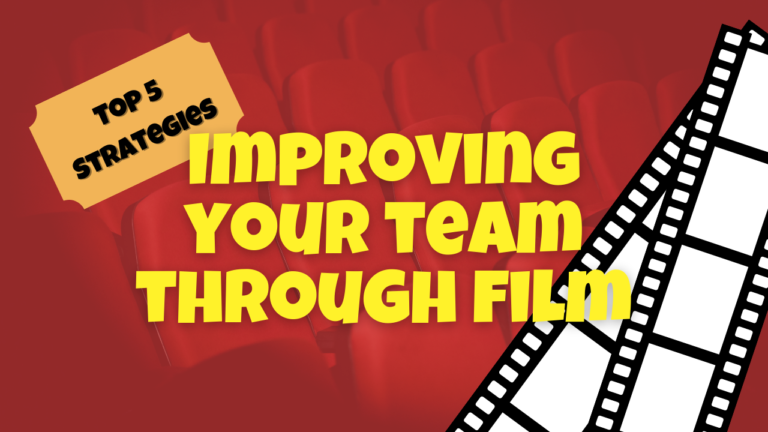(Updated) Coaches Guide To Basketball Tryouts
For many coaches, the first couple of days of practice is about selecting the team through basketball tryouts. This can be a stressful time for both the players and the coaches.
Whether you’re a veteran coach or if this is your first time, it is hard to tell a player that they didn’t make the team and they’ve been cut. Reactions can vary from tear-filled eyes to players asking for another chance and everything in between.
Starting With The End In Mind
It’s important to start your basketball tryouts with the end in mind. Every level has a different goal for why they should keep a certain number of players. At the youth and middle school levels, you want a lot of participation so having larger numbers on a team makes sense. At the junior varsity and varsity level success is more of a focal point so having fewer players to focus on and work with is more appropriate.
How you handle cuts and communicate information is important to how people view your program. It’s also important to the growth and development of the young people who make the team and who are cut from the team. At the lower levels a player can grow, mature, and become more coordinated so encouraging them to keep playing is a great message.
Let’s take a little closer look at how to finish up your basketball tryouts.
To Post A List Or Not?
Let’s start with the elephant in the room. Should you post a list or meet with each player individually? In general, I believe every player deserves the right to sit down with the coach and hear if they made the team or not. If the player didn’t make the team they should be given an honest reason why they didn’t make the team and what areas they need to work on to have a chance to make the team next year.
On two different occasions, I’ve cut players who have come back the next year and made the team. While being cut is never fun it can light a fire in certain people to work hard and improve. This is one of the reasons I think meeting with players is a positive thing. If a list is posted and the player doesn’t have a chance to listen to the reason they didn’t make the team or ask the coach a question the player may never develop an eagerness to improve and try out again next year.
So what did I mean when I wrote “in general” players deserve to meet with the coach? There are times when a list is appropriate. Some schools have 40 or more players who tryout. With this many players time may not allow for a coach to meet with every player. The first round of cuts may need to be done by posting a list. The second and final round of cuts are more easily done with a meeting from a time standpoint.
Keeping Tryout Evaluation Notes
It’s important to keep notes during your basketball tryouts. Having player evaluation notes can help with everything from learning player’s names to remembering areas they performed well in (or didn’t do so well in) throughout the tryout period.
Two forms I’ve used and are available to members of The Coaching Lab are an individual Player Tryout Evaluation and a Multi-Player Evaluation Form.
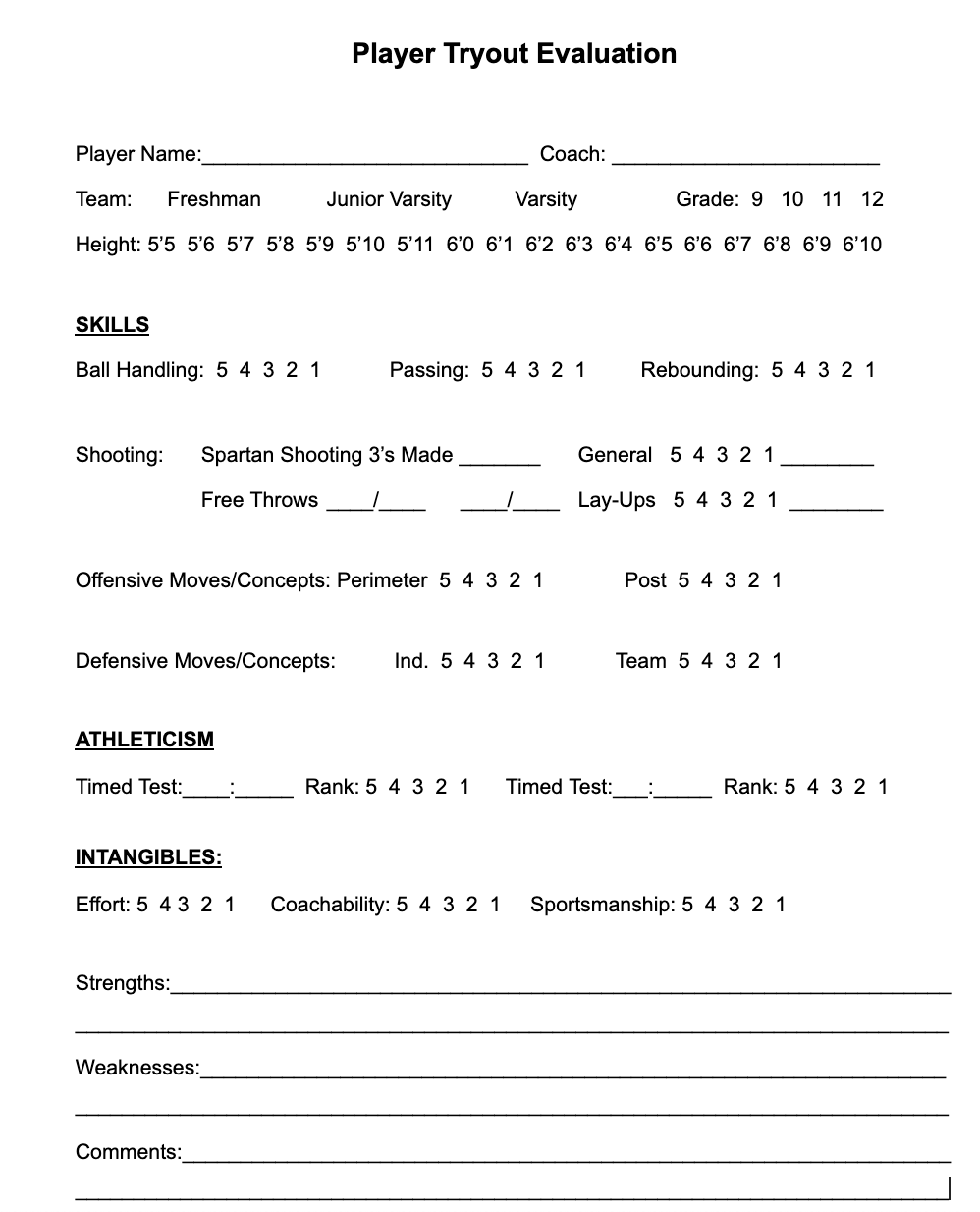
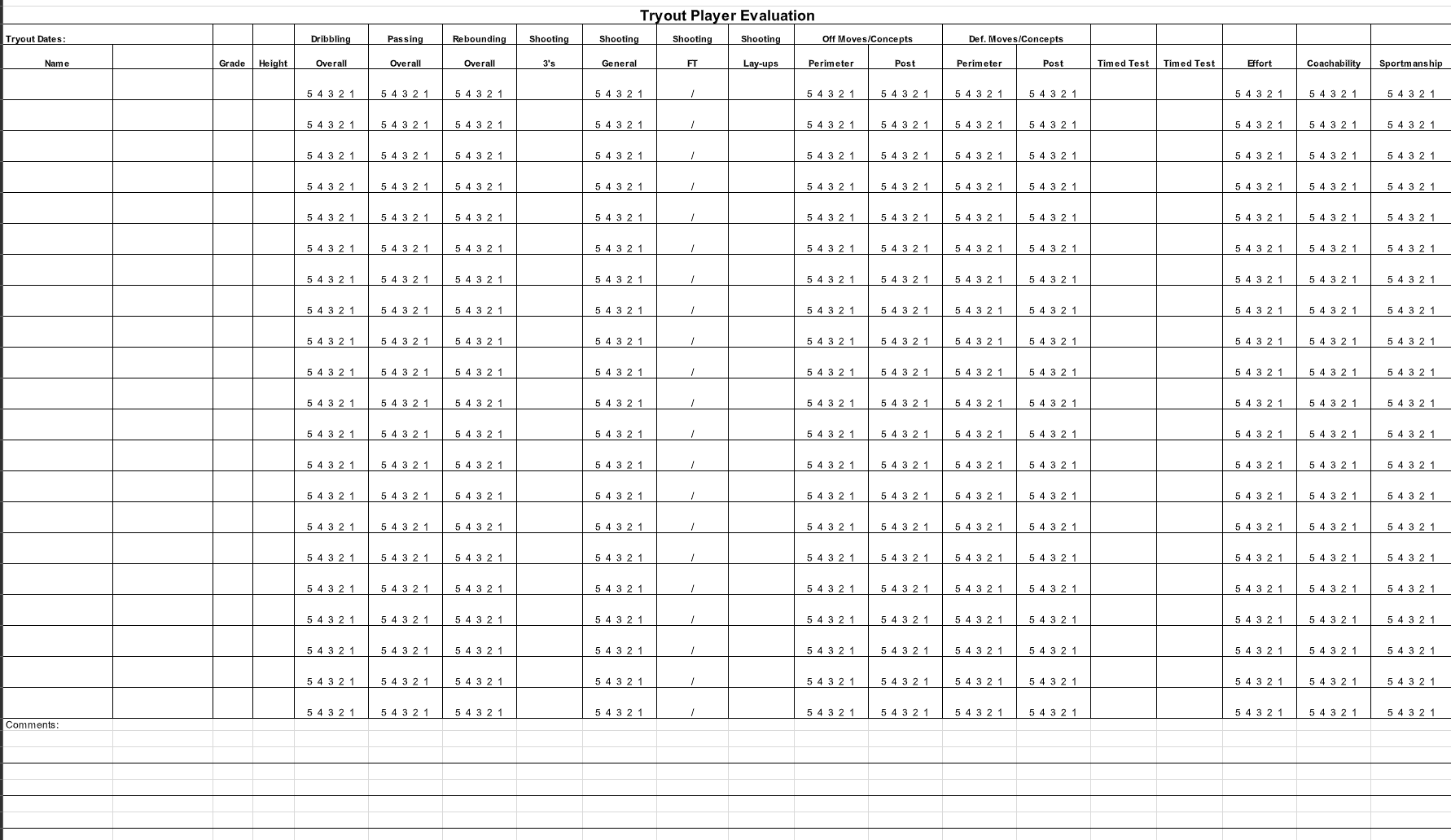
Another reason to keep tryout evaluation notes is to be able to back-up to parents why you didn’t keep their son or daughter. If all you have is your memory it can be hard to answer their questions. If you have a player’s evaluation form to refer to it is be much easier to give the parent the reasons why their child didn’t make the team and what they need to work on for next year.
Develop a Plan
The more prepared you are when you walk in the gym the smoother your basketball tryouts will go and the less stressed you’ll be. during the tryout process.
Know Your Numbers
The first thing you want to be sure to do your homework and know your numbers.
- The number of players you’ll expect to tryout
- The number of baskets you’ll have to work with
- The number of basketball you’ll have to use
- The number of minutes you’ll have in the gym
- The number of assistant or helpers you’ll have available
- The number of teams in the gym at the same time as you
Each of these numbers will help you layout a practice plan that will allow you to evaluate players in the best way possible.
Next, you want to think about what it is you’re looking for in a player and then how you’ll evaluate for what you need in a player. Every level will be evaluating players a bit differently. You need to decide what it is you need in your system for your style of play.
On one occasion, I was asked to evaluate tryouts for a semi-professional team. Players ranged from former Division 1 standouts to phenomenal Division 3 players. It was easy to see that each player was talented, but the talent was too broad of a concept. The team was looking for players to fit a certain athletic and skill level for the style of play they were going to play. They also had some specifics depending on the position the player was being evaluated for. Knowing what the team was looking for made my job a whole lot easier.
Practice Planning
Practice plans are a coaches best friend. They help you stay on schedule and keep you on track when implementing different phases of the game. So whether you write things down on a napkin or use a beautiful template for your practice plan be sure to create a plan before you walk in the gym.
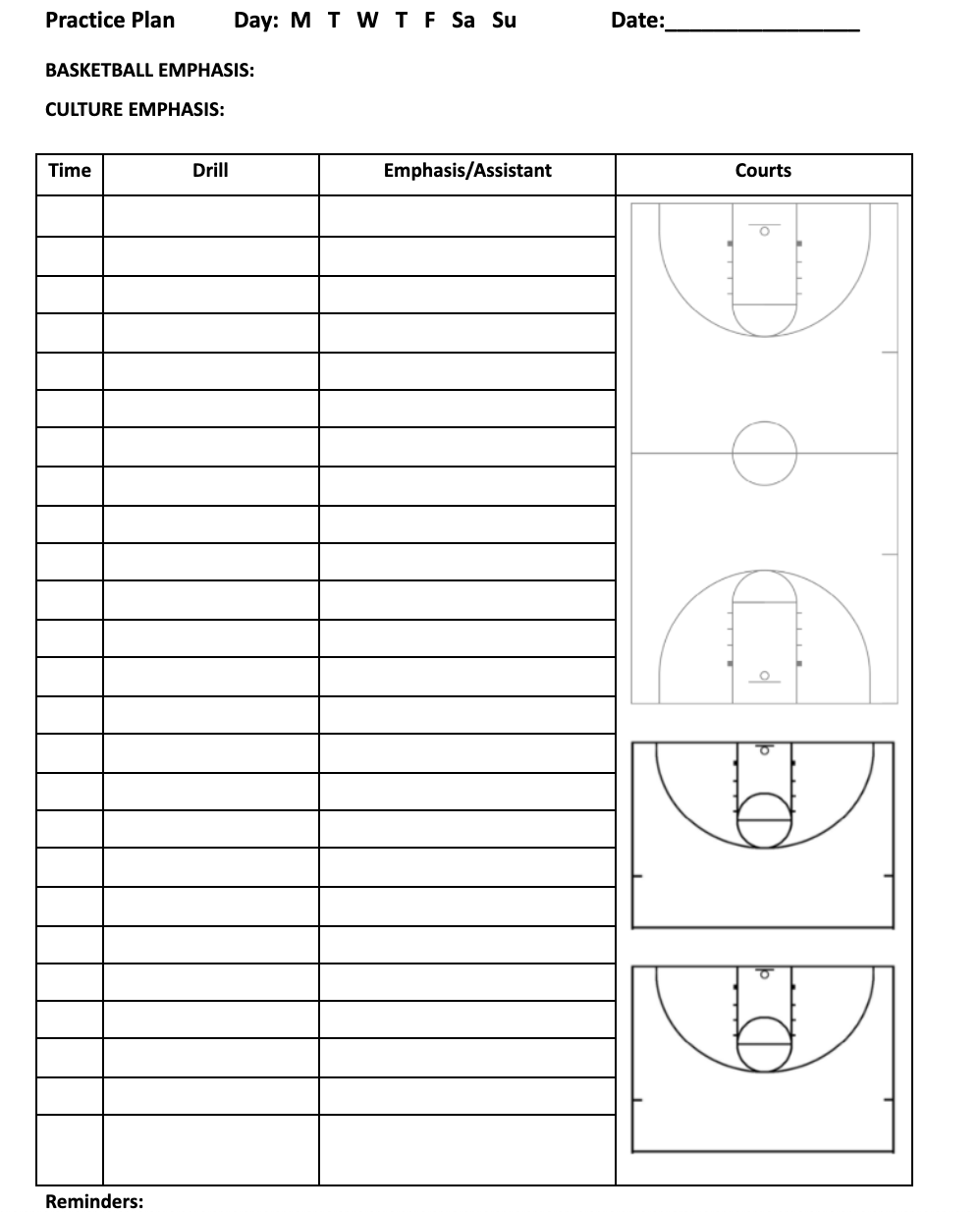
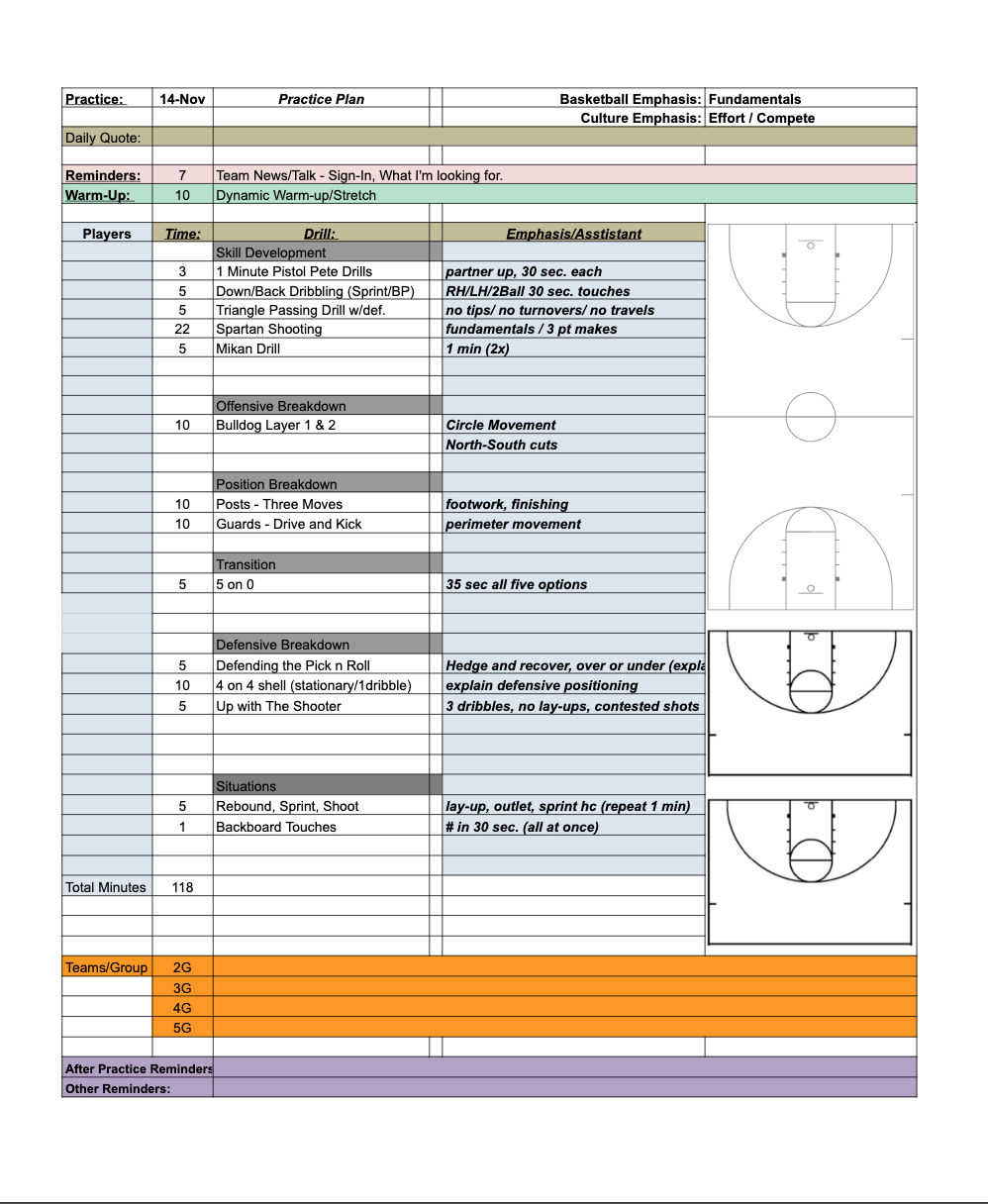
4 Key Areas of Basketball Tryouts
The four key areas during basketball tryouts that coaches look for are skills, athleticism, action, and details. Each area is important by itself but their importance is magnified when these areas are put together to make a complete player.
Skills
A player’s skill level is going to be the first thing most coaches look at during tryouts. They’ll be evaluating players on their ability to dribble, shoot, pass, and play defense. If a player is lacking in any one of these key areas they likely to go the bottom of the list fairly quickly.
You can evaluate a players skills by having them do drills or by playing small-sided games. Both will be covered in more detail below.
Athleticism
If skills are #1, athleticism is a very, very close #2. Successful basketball teams are built on athleticism. And while the most athletic team does not always win, teams who are not very athletic tend to struggle when it comes to winning consistently. For this reason, athleticism becomes a big factor when evaluating players in tryouts.
A player’s ability to run fast and jump high isn’t the only aspect though. More importantly, is how the player uses their athleticism and skills together. If a player is lightning quick but has no control of the ball when they dribble then the athleticism won’t be enough to make your team competitive every time they step on the floor.
Basketball IQ
Basketball IQ shows how well a player understands the game. You’ll want to see if a player can take their skills and athleticism and apply them when the game is live. This can be done through small-sided games – 3v3, 4v4, or 5v5 play. Players need to be able to transfer the skills they’ve learned and used those skills successfully in game situations. This means games have to be a part of your tryout, otherwise you’ll never know a players basketball IQ.
Attention To Detail
The final area to look at is how a player pays attention to the details. The two details that I pay attention to are their ability to be coached and how they treat their teammates. When a player is coachable they listen to your directions, ask questions, and try even if they aren’t very good at something right away. The second detail is being a good teammate. No one wants to be on a team with someone who is selfish and isn’t nice.
As mentioned above, when these four areas – skills, athleticism, game action, and attention to details – come together you have a a clear picture of who will make your team better on and off the court. When you find a player who possess a high level of each area you know you have a special person and player.
Tryout Drills
The question that almost all coaches come to is, how do we assess all of this in our practices? The answer is through the drills you choose and the progression you use as you go through each drill.
Depending on the level you coach you’ll find the progression from one skill to the next will be slower or faster because of the skills and concepts your players bring with them on day 1 of basketball tryouts.
Here’s exactly how I go about designing my basketball tryouts at the high school level. Every drill I use can be found inside the The Coaching Lab.
If you’re coaching a lower level team here is a format and drills to use in your basketball tryouts. Find even more drill here.
Progressions
- 1Technique with no pressure
- 2Technique with pressure
- 3Technique with controlled variables
- 4Technique with no controlled variable (live)
Lay-Up Drills

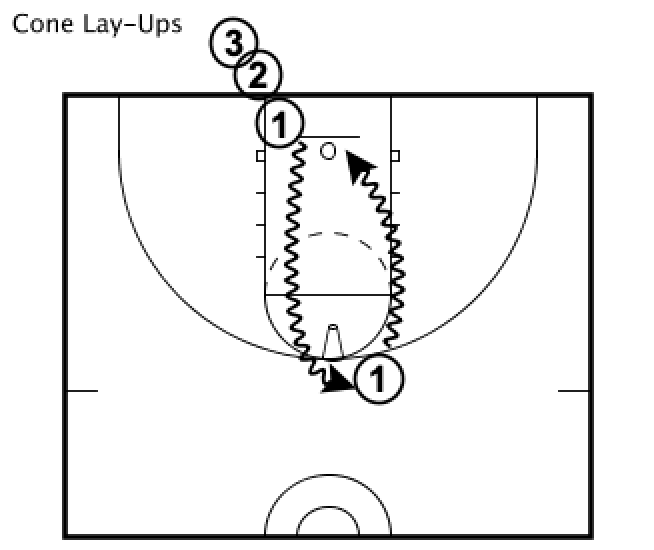
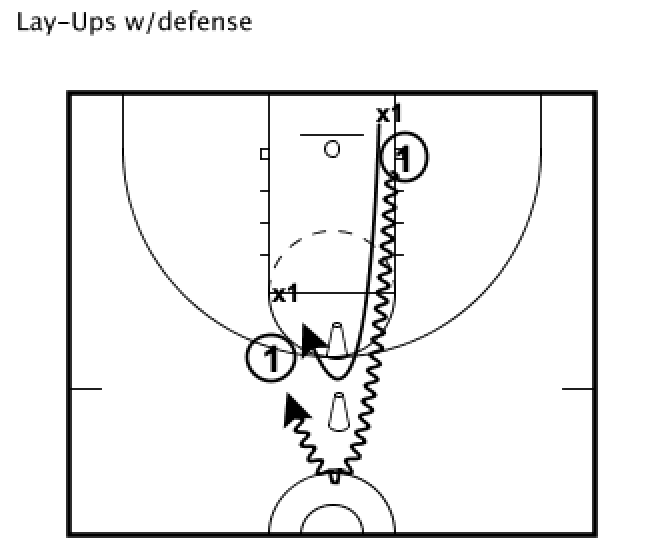
It’s important to note that this drill evaluates more than one area at a time.
- Skills – lay-ups, dribbling, basic passing
- Athleticism – jumping, speed, coordination of movements
- Game Action – cone lay-ups put players in a 1 v 1 situation
- Attention To Detail – following directions, understand concepts
Progressions 1, 2, and 3 are all used as well. Progression 4 would be best evaluated if there were no cones and it was a 1 v 1 live situation or within a scrimmage where a lay-up opportunity presented itself in the flow of the game.
Dribbling Drills
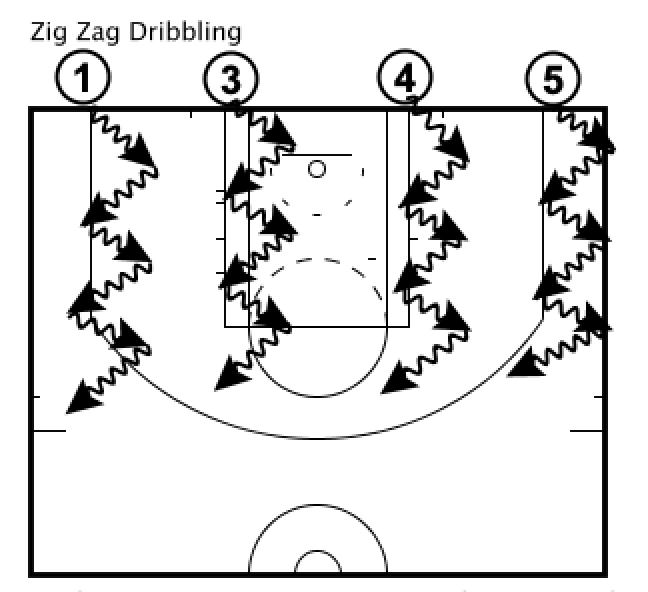

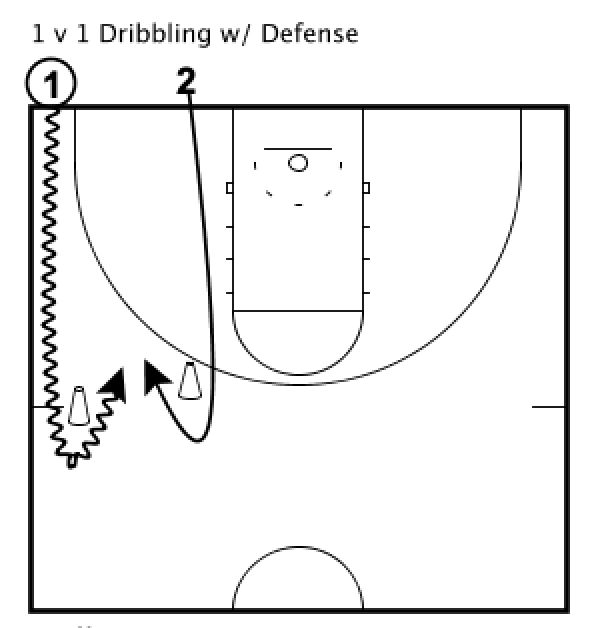
Shooting Drills
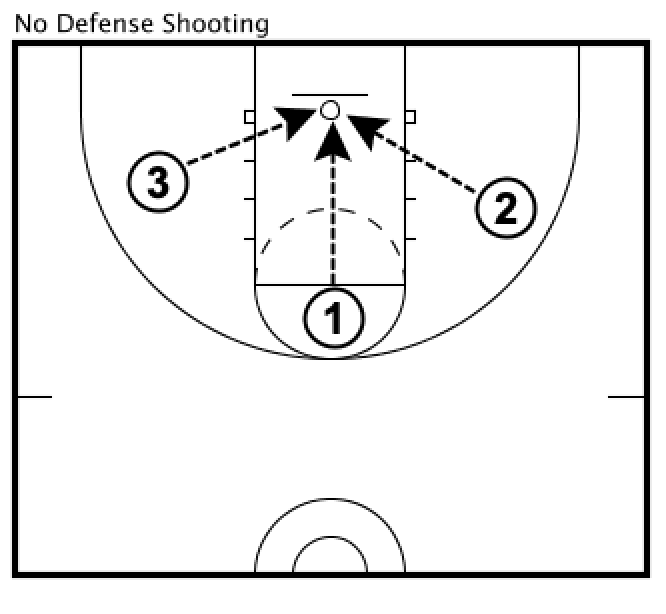
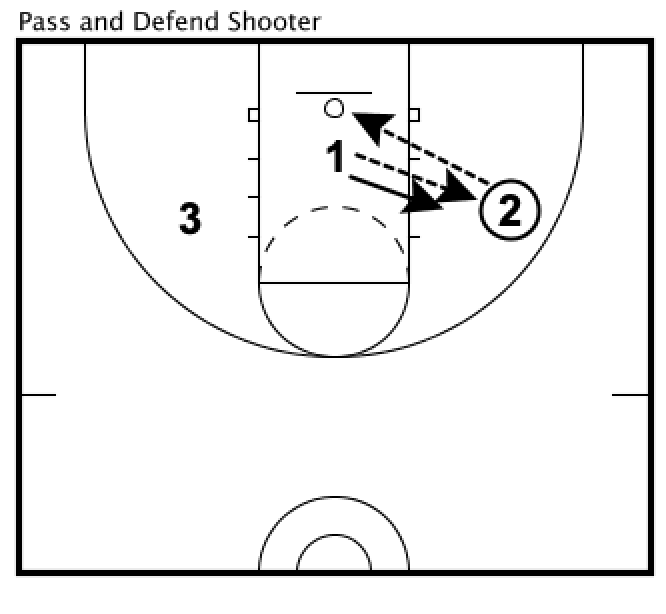
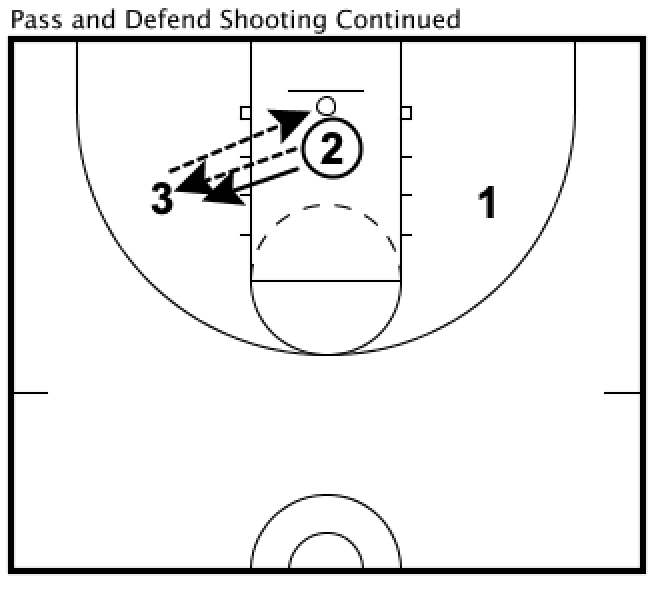
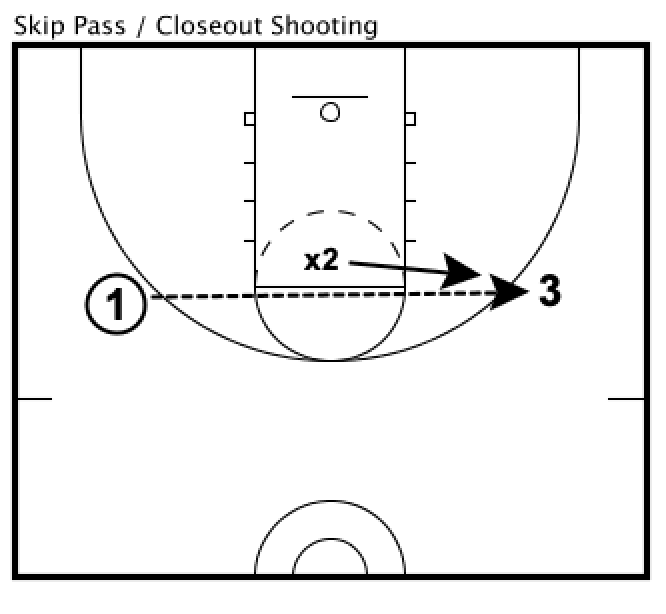
[thrive_lead_lock id=’9384′]Hidden Content[/thrive_lead_lock]
Defensive Drills
Depending on the type of half-court defense your team will play will dictate what drills you do during basketball tryouts. Some of the drills about put players in 1v1 situations where the defense would have been given some instructions as well. A players basketball IQ will really be seen once you’ve started putting them into 3 v 3 and 4v4 situations like the ones below.
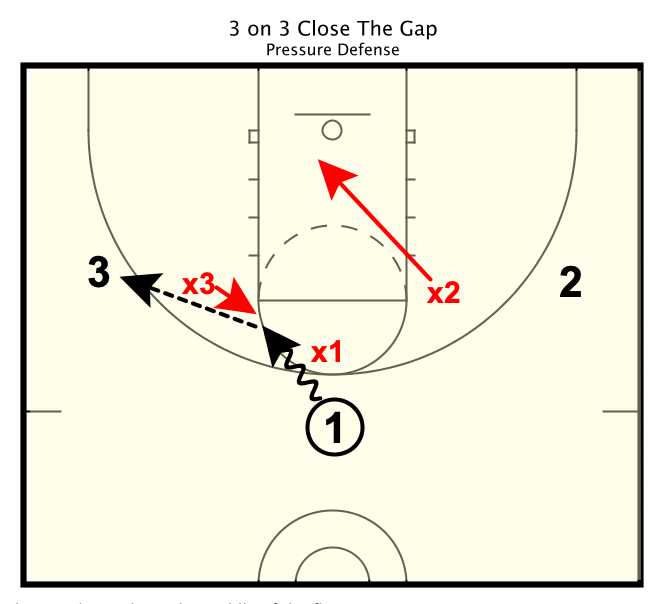
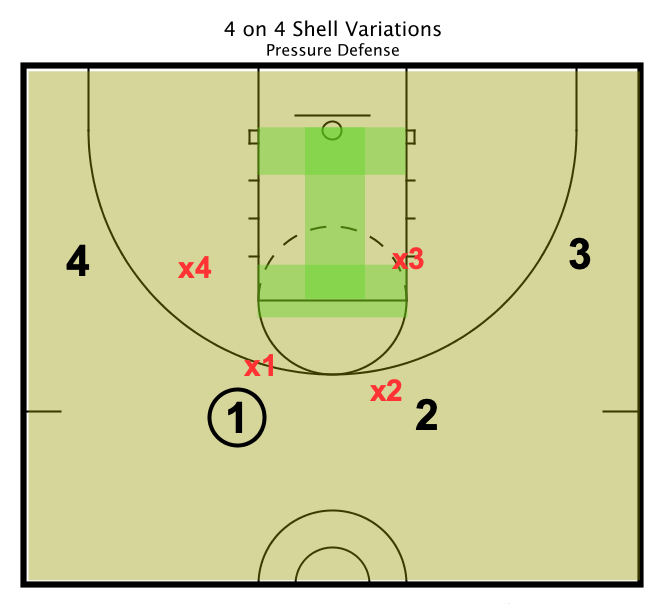
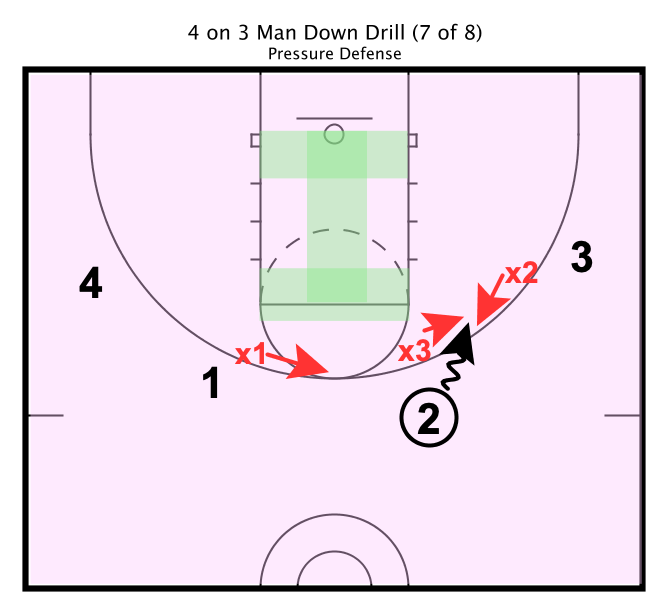
Defensive Areas To Focus On During Basketball Tryouts
- 1 on 1 Defensive Positioning
- Helpside Defensive Positioning
- Boxing Out / Rebounding
- Post Defense
- Closing Out On Shooters
- Closing The Gaps On A Drive
- Defending The Ball Screen
- Defending Off The Ball Screens
What about 5v5?
I know why coaches want to have players play 5v5, after all, that is how the games will be played. The reason I don’t like 5v5 is because you’re evaluating players skills, athleticism and basketball IQ. You want to see them try to dribble, shoot, defend, pass, boxout, etc. over and over again. In 5v5 you get to see the best player, who you already know about most likely, and that’s it. Play as many small-sided games and 2v2, 3v3, 4v4 as possible to see which players can really play.
Final Thoughts
Using the outline presented above you’ll know exactly who to keep and to cut after two or three days of basketball tryouts. For many coaches the evaluation part of practice isn’t the hardest part, it’s sitting down and having a conversation with a player who truly loves the game but doesn’t have what it takes to make the team. Remember to be kind, honest, and encouraging as you sit with each player. Not only are you helping grow the players who make the team, but you’re also helping those who don’t make the team grow as people.
If you want to grow as a coach even more consider joining the Championship Coaches Group where you’ll get to connect with me and other like minded coaches building players, teams, and programs the right way.



